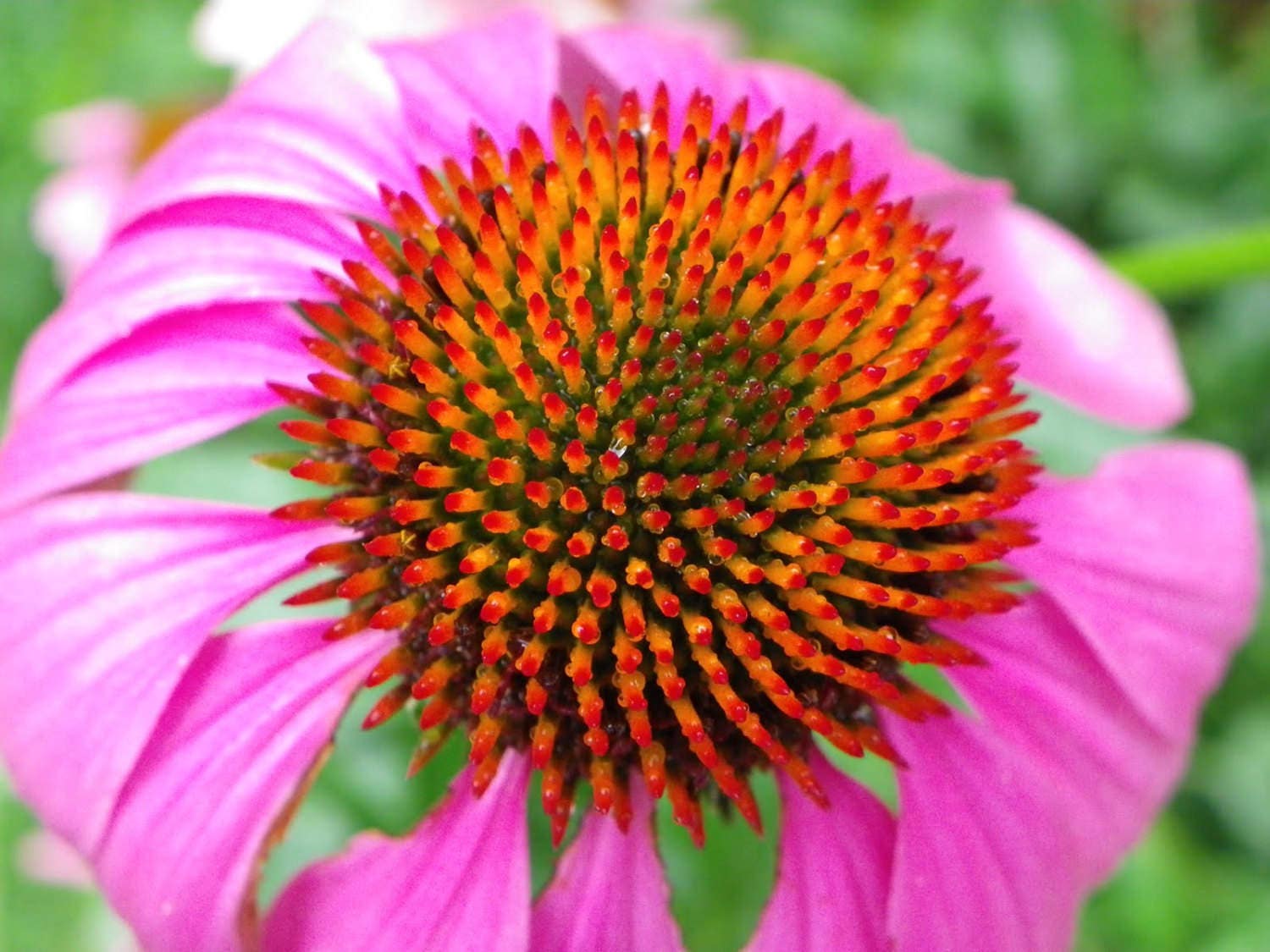

ĭeer repellent is a great estimate for gardens that continually sustain deer damage. Try enclosing the plants in a wire cage or chicken wire to deter grazing animals. Protecting young coneflowers from deer or rabbits is one of the best ways to ensure they survive a visit from a grazing deer. Plants like anise hyssop, catmint, oregano, sage, lemon ointment, lavender, lavender cotton, cosmetic onion and thyme are all examples of companion plants that keep grazing animals off with their strong smell. Plants with fuzzed, bristly or odoriferous leaves are great for deterring deer or rabbits from plants they might want to munch. How do you keep deer or rabbits aside from coneflowers ? One room is to plant companion plants around them that you know they actually don ’ thyroxine like. Keeping Rabbits or Deer Away From Coneflowers They can even eat the flowers if they are close up adequate to the ground. Rabbits will happily snack on the young stems and leaves of coneflowers. (some, such as Lusterleaf, Mary Nell, Nellie R.Reading: Are Coneflowers Deer Resistant? | Plant AddictsĬoneflowers are frequently considered deer immune, but what early animals will eat them ? If something has been nibbling on your plants, and you can easily rule out deer, rabbits are the most probably perpetrator. Plants Deer Occasionally or Frequently Browseįlowering Crabapple (small trees and low branches) Plants known to be invasive and a serious problem in natural areas, regardless of their level of deer tolerance, were excluded from the list. It is intended to be a guide for selecting ornamental plants for landscapes where deer browsing is a problem. The list below is a compilation of ornamental plants for Georgia hardiness zones that appear in published literature (see References) as well as observations by the authors.

Furthermore, many variables influence deer feeding preferences. Because most of these lists are constructed from observational trial-and-error data instead of controlled scientific studies, they are open for criticism. Over the years, wildlife organizations, universities, botanical gardens and garden writers have constructed many lists of deer-tolerant and deer-susceptible ornamental plants. Sometimes, deer browse new plantings or established plants with tender new growth, then avoid those same plants when their leaves are mature. Drought tolerant and deer-resistant, not much bothers coneflower, and it will happily grow in a wide range of soils and conditions. It provides lovely color, needs little maintenance, and attracts lots of pollinators, hummingbirds, and songbirds. Deer also shy away from plants with prickly or rough leaves and plants with a bitter taste. Purple coneflower is a dream perennial to grow in your garden. Some gardeners have reported success with planting strong-scented plants like lantana, catmint, chives, mint, sage or thyme adjacent to plants that deer frequently browse. However, deer generally do not like plants with pungent aromas. There is no such thing as a deer-resistant plant, and when deer populations are high and food becomes scarce, deer may feed on plants that are thought to be deer-tolerant. If deer are overabundant in your neighborhood, and deer herd reduction or management is not feasible, a good way to prevent deer browsing in landscapes is to plant ornamental plants that deer do not like to eat. Trapping and relocating deer is costly and often harmful or fatal to deer. Fencing whole communities or individual properties is often not practical, and may be against local ordinances or community covenants. Shooting deer or using noise guns is prohibited in most residential neighborhoods, and many citizens are opposed to this method of control. Most "home remedy" repellents, such as soap, human hair and animal dung, are unreliable.

Although there are a number of commer cially available deer repellents on the market, none of them are 100 percent effective. Nuisance deer that feast on home gardens and bucks that damage young trees by rubbing them with their antlers during the rutting season are difficult and expensive to control in residential communities. Deer also get about one-third of their water from the moisture in irrigated plants and young, succulent vegetation on expanding leaves, buds and green stems. Fertilized plants, such as those in home landscapes, provide protein, energy-rich carbohydrates, minerals and salts. Warnell School of Forestry and Natural Resourcesĭeer like nutrition-rich plants, especially in spring and summer when does are pregnant or nursing, when young deer are growing and when bucks are growing antlers.


 0 kommentar(er)
0 kommentar(er)
